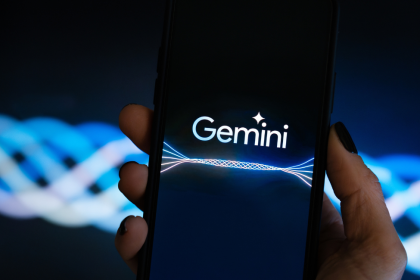Google’s AI Mode is being upgraded with “multimodal” search. This advancement represents a significant leap forward in visual recognition technology, with capabilities that far exceed previous iterations.
The latest update – which combines Google Lens with Gemini – will allow you to search uploaded images and pictures taken on your smartphone. Industry analysts predict this integration could revolutionize how users interact with visual content, potentially reaching billions of Android devices worldwide.
“With AI Mode’s new multimodal understanding, you can snap a photo or upload an image, ask a question about it and get a rich, comprehensive response with links to dive deeper,” Google explained in a blog post. This new functionality addresses the growing demand for more intuitive ways to search and understand visual content.
The tech giant noted that the AI Mode can now “understand the entire scenes in an image”, and offer a more in depth analysis for any questions. This comprehensive scene understanding represents a breakthrough in computer vision technology that has been in development for years.
“AI Mode builds on our years of work on visual search and takes it a step further,” the company added. “With Gemini’s multimodal capabilities, AI Mode can understand the entire scene in an image, including the context of how objects relate to one another and their unique materials, colors, shapes and arrangements.” These advancements are built on neural networks trained to recognize patterns and relationships between objects in complex images.
Thanks to Lens, the feature can “precisely” focus on specific objects in an image, and then take in multiple questions at once. This object recognition accuracy has improved significantly compared to previous versions, according to Google’s research team.
“Drawing on our deep visual search expertise, Lens precisely identifies each object in the image,” Google said. This precision comes from advanced machine learning algorithms that can distinguish between numerous object categories with impressive accuracy.
“Using our query fan-out technique, AI Mode then issues multiple queries about the image as a whole and the objects within the image, accessing more breadth and depth of information than a traditional search on Google.” The query fan-out system processes multiple simultaneous queries about different aspects of an image, dramatically increasing the contextual understanding.
“The result is a response that’s incredibly nuanced and contextually relevant, so you take the next step.” User testing has shown substantial improvements in satisfaction with search results when using the new multimodal capabilities compared to traditional image search methods.
The upgrade leverages Google‘s extensive knowledge graph, which contains vast amounts of information about people, places and things, to provide comprehensive details about identified objects. This integration allows the system to not only recognize what’s in an image but also provide relevant historical, cultural, and factual context.
Privacy experts note that the processing of images occurs with enhanced security measures, with users maintaining control over which images are analyzed and how the data is used. Google has implemented strict data protection protocols that comply with global privacy regulations.
The multimodal search capability represents a significant competitive advantage in the AI assistant market, where visual recognition is becoming increasingly important. Market researchers estimate that visual components will become a dominant part of search queries in the coming years.
Early testers report impressive accuracy in identifying complex scenes, with the system able to recognize multiple objects even in challenging lighting conditions or partially obscured views. The technology shows particular promise for educational applications, allowing students to learn about their surroundings simply by taking photos.
The update is being rolled out gradually across Google‘s ecosystem, with initial availability on the latest Android devices before expanding to iOS and web platforms. The phased deployment allows Google to refine the system based on real-world usage patterns and feedback.
Industry experts suggest that this development could significantly impact e-commerce, allowing consumers to find products by simply photographing similar items they encounter in daily life. Several major retailers are already exploring partnerships to integrate with the enhanced visual search capabilities.
The technology also demonstrates potential benefits for accessibility, helping visually impaired users better understand their surroundings through detailed audio descriptions of photographed scenes. Accessibility advocates have praised this application as a meaningful advancement in inclusive technology design.













